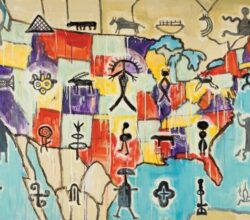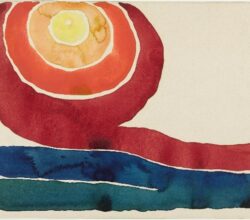
Jaune Quick-to-See Smith Can’t Believe She’s Still the First
Joshua Hunt | Vulture | 11th April 2023
“Why not before?” says a Whitney curator about this first retrospective given to a Native American artist. Part of the answer is that few had thought contemporary art and indigeneity might co-exist. Smith has spent decades demonstrating such a co-existence is possible. Her work uses modernist methods – collage, oil paints, prints – to make wry commentaries on “post-genocidal existence”. “Smith is one of America’s greatest living artists, and failing to acknowledge that would be madness.”


